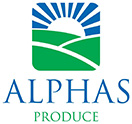In the fall, you’ll find available a wide variety of squashes including acorns, butternut, buttercup, carnival, hubbard, spaghetti, pumpkins and many others. There is no standard size for fall squash, so you should make your selection based on the how much you need. In general, squash should feel heavier than it looks. Make sure the stem appears dull, solid and dry. If the stem is at all blackened, moist, soft, cracked, blemished, or collapsed, the whole squash may be past its prime. To cook, first remove fibers and seeds; then bake, steam, or boil the squash. When water is used in cooking, the quantity of water should be kept small to avoid losing flavor and nutrients. Fall squash are frequently cut in half, baked, and served in the shell. Squash pulp is also used for pies and may be prepared in casseroles, souffles, pancakes, and custards. Store in a cool, dark, well-ventilated place for up to one month.
